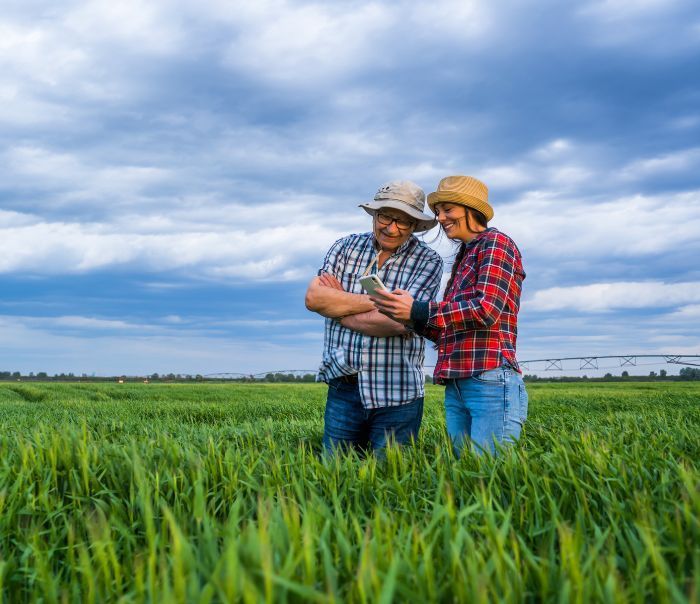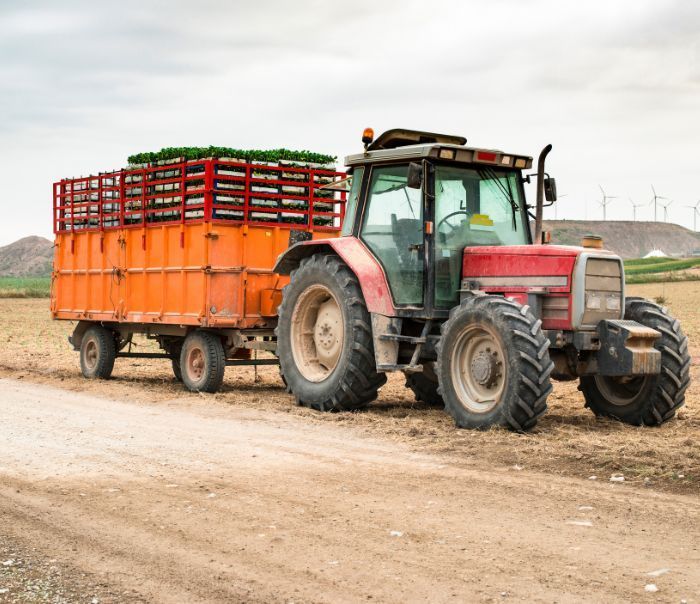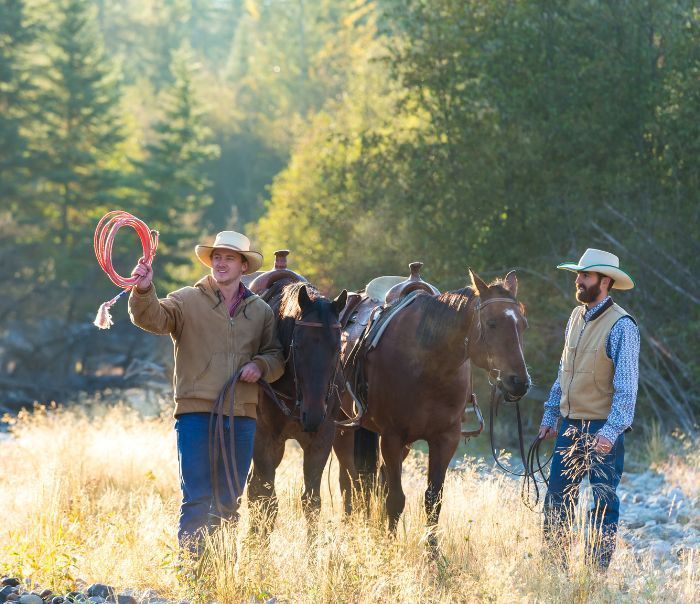Read The Latest News From Us
Leased Land, Shared Equipment: How Texas Ranchers Can Avoid Liability Nightmares

Leased Land, Shared Equipment: How Texas Ranchers Can Avoid Liability Nightmares

Understanding the Landscape of Texas Ranching
Texas ranching is a vital part of the state's economy and culture. With vast expanses of land and a rich history, ranchers face unique challenges, particularly when it comes to managing leased land and shared equipment. Understanding the legal implications of these arrangements is crucial for avoiding liability issues that can arise unexpectedly.
Leased land can offer ranchers flexibility and access to resources without the burden of ownership. However, it also introduces complexities regarding liability, particularly when shared equipment is involved. Knowing how to navigate these waters can protect ranchers from costly legal disputes and financial setbacks. The landscape of Texas ranching is not just defined by the cattle and crops; it is also shaped by the relationships formed between ranchers, landowners, and the community. This interconnectedness can often lead to collaborative opportunities, such as co-hosting events or sharing best practices, which can enhance the overall ranching experience.
The Importance of Clear Agreements
One of the most effective ways to avoid liability nightmares is by establishing clear agreements. Whether leasing land or sharing equipment, having a written contract is essential. This document should outline the responsibilities of each party, usage terms, and liability coverage.
In the absence of a clear agreement, misunderstandings can lead to disputes that may escalate into legal battles. Ranchers should consider including clauses that address maintenance responsibilities, insurance requirements, and procedures for resolving conflicts. These proactive measures can significantly reduce the risk of liability. Additionally, fostering open communication between all parties involved can further mitigate misunderstandings. Regular check-ins and updates can help ensure that everyone is on the same page, allowing ranchers to focus on their operations rather than potential disputes.
Insurance Considerations
Insurance is a critical component of risk management for ranchers. When leasing land or sharing equipment, it is essential to have appropriate insurance coverage in place. This includes liability insurance that protects against claims arising from accidents or injuries on the property.
Ranchers should also verify that any equipment shared with others is covered under their insurance policy. In many cases, shared equipment may not be fully covered, leaving ranchers vulnerable to financial loss. Consulting with an insurance professional can help identify potential gaps in coverage and ensure comprehensive protection. Furthermore, ranchers might consider specialized insurance products tailored for agricultural operations, which can provide additional peace of mind. These policies often cover unique risks associated with ranching, such as livestock mortality, crop failure, and even natural disasters, ensuring that ranchers are well-equipped to handle unforeseen circumstances that could impact their livelihoods.
Navigating Leased Land Agreements
Leasing land can be a beneficial arrangement for Texas ranchers, but it comes with its own set of challenges. Understanding the nuances of these agreements is essential for avoiding liability issues.
When entering into a lease, ranchers should conduct thorough due diligence. This includes understanding the land's history, any existing liabilities, and the terms of the lease agreement. A well-informed approach can help mitigate risks associated with leased land.
Conducting Due Diligence
Before signing a lease, ranchers should investigate the property thoroughly. This includes checking for any environmental hazards, existing easements, or prior legal disputes. Understanding these factors can help ranchers make informed decisions and avoid potential liabilities that could arise from unforeseen issues.
Additionally, ranchers should ensure that the lease agreement includes provisions that protect them from liabilities associated with the land. This might involve negotiating clauses that limit liability for accidents or injuries that occur on the property. Engaging with legal experts who specialize in land leases can provide invaluable insights and help ranchers navigate complex legal language, ensuring that their interests are adequately protected.
Understanding Lease Terms
Lease agreements can vary significantly, and ranchers must understand the specific terms outlined in their contracts. Key elements to pay attention to include the duration of the lease, payment terms, and any restrictions on land use.
Ranchers should also be aware of any renewal options or termination clauses. These details can greatly affect a rancher's ability to operate effectively and avoid potential legal issues down the road. A clear understanding of lease terms is essential for maintaining a successful ranching operation. Moreover, it's prudent for ranchers to keep open lines of communication with landowners, as establishing a good relationship can facilitate negotiations and lead to more favorable terms in future agreements. Regular check-ins can also help address any emerging concerns before they escalate into larger disputes, fostering a cooperative environment that benefits both parties involved.
Shared Equipment: Risks and Responsibilities
Sharing equipment among ranchers can provide significant cost savings, but it also introduces risks that must be managed carefully. Establishing clear guidelines for equipment use is vital to prevent misunderstandings and potential liability claims. The benefits of collaboration can be substantial, allowing ranchers to access high-quality machinery without the burden of full ownership costs. However, the success of such arrangements hinges on the establishment of trust and transparency among all parties involved.
When sharing equipment, ranchers should consider creating a usage agreement that outlines the terms of sharing, maintenance responsibilities, and liability coverage. This agreement can serve as a safeguard against disputes and ensure that all parties understand their obligations. In addition to outlining the specifics of usage, the agreement could also include provisions for scheduling, such as prioritizing access during peak seasons or emergencies, which can further enhance cooperation and minimize conflicts.
Establishing Usage Guidelines
Usage guidelines should be detailed and specific. They should include information on who is authorized to use the equipment, how it should be maintained, and what to do in case of damage or malfunction. Clear communication about these guidelines can help prevent accidents and misunderstandings. Furthermore, it may be beneficial to hold regular meetings among the ranchers to discuss any updates or changes to the guidelines, ensuring that everyone remains informed and engaged in the process.
Ranchers should also consider scheduling regular inspections and maintenance checks to ensure that shared equipment remains in good working condition. This proactive approach can help identify potential issues before they escalate into significant problems. Keeping a shared maintenance log can be an effective way to track repairs and servicing, allowing ranchers to stay on top of the equipment's condition and ensuring accountability among users.
Liability and Insurance for Shared Equipment
Liability issues can arise when shared equipment is involved, particularly if an accident occurs while someone else is using it. Ranchers should ensure that their insurance policies cover shared equipment and that all parties involved are aware of their responsibilities in case of an incident. It is crucial to discuss the types of coverage needed, such as collision, theft, and liability, to ensure comprehensive protection. Additionally, ranchers may want to consult with an insurance professional to tailor their policies to the specific risks associated with shared equipment.
It may also be beneficial to require all users of shared equipment to have their own liability insurance. This additional layer of protection can help mitigate risks and ensure that all parties are adequately covered in the event of an accident. Establishing a protocol for reporting incidents can further enhance safety, allowing ranchers to respond promptly and effectively to any issues that arise. By fostering a culture of responsibility and accountability, ranchers can create a safer and more efficient environment for sharing equipment, ultimately benefiting their operations and the broader agricultural community.
Legal Considerations for Texas Ranchers
Texas ranchers must navigate a complex legal landscape, particularly when it comes to liability issues. Understanding the relevant laws and regulations is crucial for avoiding legal pitfalls. The vastness of Texas ranch lands and the diverse activities that take place on them—from cattle grazing to hosting hunting excursions—can lead to a myriad of legal challenges that ranchers must be prepared to face.
Ranchers should familiarize themselves with Texas laws regarding land leases, liability, and insurance. This knowledge can help them make informed decisions and protect themselves from potential legal challenges. Furthermore, staying informed about changes in legislation, such as new agricultural policies or environmental regulations, is essential for maintaining compliance and ensuring the sustainability of their operations.
Liability Laws in Texas
Texas has specific laws that govern liability for accidents and injuries on leased land. Understanding these laws is essential for ranchers who lease land or share equipment. For example, Texas follows a modified comparative negligence rule, which means that liability can be shared among parties based on their level of fault. This can be particularly relevant in situations involving multiple parties, such as joint ventures or partnerships in ranching operations.
Ranchers should also be aware of any statutes of limitations that apply to liability claims. These laws dictate the time frame within which a claim must be filed, and missing this deadline can result in losing the right to pursue legal action. Additionally, ranchers should consider the implications of premises liability, which holds landowners responsible for injuries that occur on their property. This can include everything from slips and falls to injuries caused by livestock or equipment, making it imperative for ranchers to maintain safe conditions on their ranches.
Consulting Legal Professionals
Given the complexities of liability laws, consulting with a legal professional who specializes in agricultural law can be invaluable. An attorney can provide guidance on lease agreements, liability issues, and insurance requirements, helping ranchers navigate the legal landscape with confidence. They can also help ranchers understand the nuances of state and federal regulations that may impact their operations, such as environmental protections or labor laws.
Additionally, legal professionals can assist in drafting contracts that protect ranchers from potential liabilities. This proactive approach can save ranchers time, money, and stress in the long run. Moreover, they can offer insights into risk management strategies, such as implementing safety protocols and training programs for employees, which can further mitigate potential legal issues. By investing in legal counsel and risk management, ranchers can focus on their core business activities while minimizing their exposure to legal risks.
Best Practices for Risk Management
Implementing best practices for risk management is essential for Texas ranchers. By taking a proactive approach, ranchers can significantly reduce their exposure to liability issues and protect their livelihoods. The vast landscapes of Texas, while beautiful, come with their own set of challenges that can pose risks to ranching operations. From unpredictable weather patterns to fluctuating market prices, ranchers must be prepared to navigate a variety of potential threats to their business.
Establishing clear communication channels, conducting regular inspections, and maintaining comprehensive insurance coverage are just a few of the strategies that can help ranchers manage risk effectively. Regular risk assessments can also play a pivotal role in identifying vulnerabilities within the ranching operation. By evaluating everything from livestock health to equipment functionality, ranchers can take preemptive measures that safeguard their assets and ensure the sustainability of their operations.
Regular Training and Education
Ongoing training and education for ranch staff and equipment users can play a crucial role in minimizing risk. Providing training on safe equipment operation, emergency procedures, and proper maintenance can help prevent accidents and injuries. Furthermore, incorporating hands-on training sessions can enhance the learning experience, allowing staff to practice skills in a controlled environment before applying them in real-life situations.
Additionally, ranchers should stay informed about changes in laws and regulations that may impact their operations. This knowledge can help ranchers adapt their practices to remain compliant and reduce liability risks. Attending workshops, seminars, and industry conferences can be beneficial for ranchers, as these events often cover the latest trends and legal updates in agriculture. Engaging with experts in the field can also provide ranchers with innovative ideas and strategies for improving their risk management practices.
Building Strong Relationships
Building strong relationships with landlords, equipment partners, and other ranchers can foster a collaborative environment that enhances risk management. Open communication and trust can lead to better cooperation when issues arise, making it easier to resolve conflicts without legal disputes. Establishing a network of reliable contacts can also provide ranchers with access to shared resources, such as equipment rentals or labor assistance during peak seasons, which can mitigate risks associated with operational downtime.
Networking with other ranchers can also provide valuable insights and best practices for managing leased land and shared equipment. Learning from the experiences of others can help ranchers avoid common pitfalls and enhance their operations. Participating in local agricultural associations or online forums can facilitate knowledge exchange and create a sense of community among ranchers. These connections can lead to collaborative efforts in risk management, such as joint purchasing agreements for insurance or shared training initiatives, ultimately strengthening the resilience of the ranching community as a whole.
Conclusion: A Proactive Approach to Liability Management
Texas ranchers face unique challenges when it comes to managing leased land and shared equipment. By understanding the legal landscape, establishing clear agreements, and implementing best practices for risk management, ranchers can significantly reduce their exposure to liability issues.
A proactive approach is essential for navigating the complexities of ranching in Texas. By prioritizing communication, education, and legal compliance, ranchers can protect their livelihoods and ensure the long-term success of their operations.
Ultimately, taking the time to address potential liability issues can lead to a more secure and prosperous future for Texas ranchers, allowing them to focus on what they do best: raising livestock and cultivating the land.
Latest News



